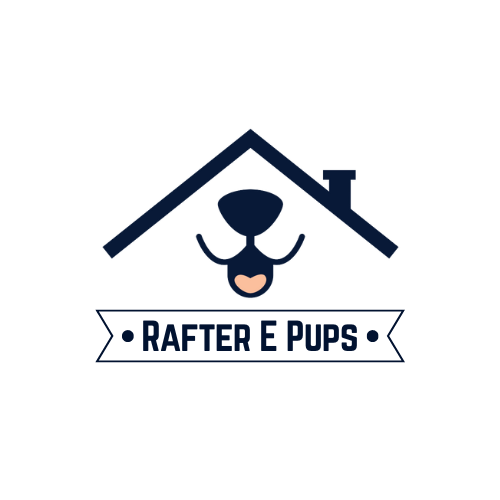Bathing your dog is a crucial part of their grooming routine. Regular baths not only help maintain your dog’s hygiene but also contribute to their overall health and well-being. However, the process can sometimes be challenging, especially if your dog is not a fan of water.
To bathe your dog, gather supplies like dog shampoo and towels. Wet your dog with lukewarm water, apply shampoo, and lather gently. Rinse thoroughly, then apply conditioner if needed. Dry with towels, or use a dryer for long coats. Brush while drying to prevent tangles and reward your dog afterward.
Preparing to Bath Your Dog
Preparing to bathe your dog is crucial for a smooth and stress-free experience. Proper preparation ensures that you have all necessary supplies at hand and that your dog is comfortable throughout the process. This step sets the stage for a successful bath, minimizing discomfort and making the experience enjoyable for both you and your furry friend. In this section, we'll cover everything you need to get ready, from gathering supplies to choosing the right bathing location.
Gather Supplies
Before you start, make sure you have all the necessary supplies ready:
- Dog Shampoo: Use a shampoo specifically formulated for dogs. Human shampoos can be too harsh and may cause skin irritation.
- Dog Conditioner (optional): If your dog has a long or curly coat, a conditioner can help make their fur softer and easier to manage.
- Towels: Have several towels on hand for drying.
- Brush: A brush or comb can help detangle your dog’s fur before and after the bath.
- Showerhead or Hose: If you’re using a bathtub, a handheld showerhead or hose can be useful for rinsing.
- Non-slip Mat: To prevent your dog from slipping, place a non-slip mat in the bathtub or sink.
Choose the Right Location
Select a bathing area that is comfortable for both you and your dog. This could be a bathtub, a shower, or even a large sink for smaller dogs. Ensure the area is warm and draft-free to keep your dog comfortable throughout the process.
Brush Your Dog
Before getting your dog wet, brush their coat to remove any tangles or mats. This helps the shampoo and conditioner to spread evenly and makes the bath more effective.
Bathing Your Dog
Bathing your dog is more than just a routine chore—it's an opportunity to keep your furry friend clean, healthy, and happy. This phase of the grooming process involves carefully washing and rinsing your dog to remove dirt, debris, and odors while ensuring their comfort and safety. By following the right techniques and using appropriate products, you can make bath time a positive experience.
Adjust the Water Temperature
The water should be lukewarm—neither too hot nor too cold. Test the water temperature with your hand to ensure it’s comfortable for your dog.
Wet Your Dog
Gently wet your dog’s coat using a handheld showerhead, cup, or hose. Start from the neck and work your way down to ensure even coverage. Be cautious around your dog’s head and ears, as they may be more sensitive.
Apply Shampoo
Apply a small amount of dog shampoo to your dog’s coat. Gently lather the shampoo, working it into their fur. Pay attention to areas that tend to get dirty, such as the paws, underbelly, and tail. Avoid getting shampoo in your dog’s eyes, ears, and mouth.
Rinse Thoroughly
Rinse your dog thoroughly to remove all shampoo. Any leftover shampoo can cause skin irritation, so ensure no residue remains. Again, be gentle around the head and ears.
Apply Conditioner (if needed)
If you’re using a conditioner, apply it following the shampoo. Leave it on for the recommended time on the product label, then rinse thoroughly.
Clean Your Dog’s Ears
Use a damp cloth or a pet-specific ear cleaning solution to wipe the outer parts of your dog’s ears. Avoid inserting anything into the ear canal. Cleaning your dog’s ears regularly helps prevent infections.
Wash the Face
Use a damp washcloth to gently clean your dog’s face. Avoid using shampoo on their face to prevent irritation. Focus on areas with dirt or food residue, being careful around the eyes and nose.
Drying Your Dog
Drying your dog properly after a bath is essential for maintaining their comfort and coat health. Whether using towels, a dog dryer, or a combination of both, effective drying helps prevent skin issues and minimizes the risk of tangles and mats. This stage also allows you to check for any skin problems that might need attention.
Towel Dry
Gently pat your dog dry with towels to remove excess water. Avoid rubbing, as this can cause tangling and may irritate their skin.
Use a Dog Dryer (optional)
For long-haired breeds, a dog dryer can help speed up the drying process. Set the dryer to a low, cool setting to prevent overheating and start drying your dog’s coat. Keep the dryer moving to avoid concentrating heat on one spot.
Brush While Drying
As your dog’s coat begins to dry, use a brush to help detangle any remaining mats and prevent new ones from forming. Brushing also helps distribute natural oils throughout their coat.
Aftercare and Tips
Aftercare and tips are crucial for ensuring your dog's bath has lasting benefits and that they remain comfortable and healthy. This stage involves checking your dog's skin for any signs of irritation, providing positive reinforcement, and maintaining a consistent grooming routine. Proper aftercare helps solidify the positive aspects of bath time and ensures that your dog's coat stays in top condition.
Check for Skin Issues
While bathing, take the opportunity to check your dog’s skin for any signs of irritation, redness, or parasites. If you notice anything unusual, consult your veterinarian.
Reward Your Dog
After the bath, give your dog a treat and plenty of praise. This positive reinforcement helps make the bathing experience more enjoyable and reinforces good behavior.
Clean the Bath Area
Once you’ve finished, clean the bathing area to remove any stray hair and shampoo residue. This helps prevent odors and keeps the area hygienic for future use.
Maintain a Bathing Routine
Establish a regular bathing schedule based on your dog’s breed, coat type, and lifestyle. Some dogs may need baths more frequently than others. For example, dogs with oily skin or those that get dirty often may need more frequent baths, while dogs with less active lifestyles may need fewer baths.
Avoid Over-Bathing
Bathing too frequently can strip your dog’s coat of its natural oils, leading to dry skin and irritation. Stick to a routine that works for your dog’s specific needs and consult your veterinarian if you’re unsure about the right frequency.
Consult a Professional
If your dog is particularly anxious or aggressive during baths, consider seeking the help of a professional groomer. They have experience handling dogs with various temperaments and can provide guidance and assistance.
Troubleshooting Common Issues
Troubleshooting common issues during and after your dog’s bath is key to addressing challenges and ensuring a smooth grooming process. Whether your dog is anxious about bath time, has persistent dirt, or experiences skin irritation, identifying and resolving these problems helps create a positive experience for both you and your furry friend.
My Dog Hates Bath Time
If your dog is scared or anxious about baths, try to make the experience as positive as possible. Use treats, praise, and a calm demeanor to reassure your dog. Gradually acclimate them to the bath environment by allowing them to explore it without water before introducing bath time.
My Dog’s Coat is Still Dirty
If your dog’s coat remains dirty despite your efforts, ensure you’re using enough shampoo and that you’re rinsing thoroughly. For stubborn dirt or odors, consider using a specialized dog shampoo designed for deep cleaning.
My Dog’s Skin is Irritated
If you notice redness, itching, or irritation after a bath, it could be due to a reaction to the shampoo or over-bathing. Try switching to a hypoallergenic or sensitive skin formula and consult your veterinarian if the issue persists.
My Dog Has Mats or Tangles
If your dog has mats or tangles, it’s best to address them before the bath. Use a dematting brush or seek the help of a professional groomer if needed. Bathing can sometimes worsen mats if they’re not properly addressed beforehand.
Additional Tips for Different Coat Types
Each dog coat type presents unique grooming challenges and requires specific care during bath time. Understanding the needs of short, long, curly, and double-coated breeds ensures you provide the best possible treatment for your dog’s coat, enhancing their cleanliness and comfort.
Short-Haired Dogs
Short-haired dogs typically require less maintenance during baths. Ensure you use a gentle shampoo and rinse thoroughly. Brushing before and after the bath helps remove loose hairs and keeps their coat shiny.
Long-Haired Dogs
Long-haired dogs benefit from additional grooming before and after baths. Use a detangling spray or conditioner to help with mats, and consider using a dog-specific brush or comb to maintain their coat’s health.
Curly-Haired Dogs
Dogs with curly coats, such as Poodles or Doodles, may need extra attention to prevent tangles. Use a conditioner and a detangling brush to keep their curls looking their best. Ensure thorough rinsing to prevent buildup.
Double-Coated Dogs
Double-coated breeds, like Huskies or Golden Retrievers, may need special attention to their undercoat. Use a deshedding brush and a coat conditioner to help manage shedding and keep their coat healthy.
Bathing your dog is an essential part of their grooming routine that helps maintain their cleanliness, health, and happiness. By following this step-by-step guide, you can ensure a smooth and effective bathing experience for both you and your furry friend. Remember to tailor the bathing routine to your dog’s specific needs and coat type, and don’t hesitate to seek professional help if needed. Regular baths, combined with proper grooming and care, will keep your dog looking and feeling their best.

